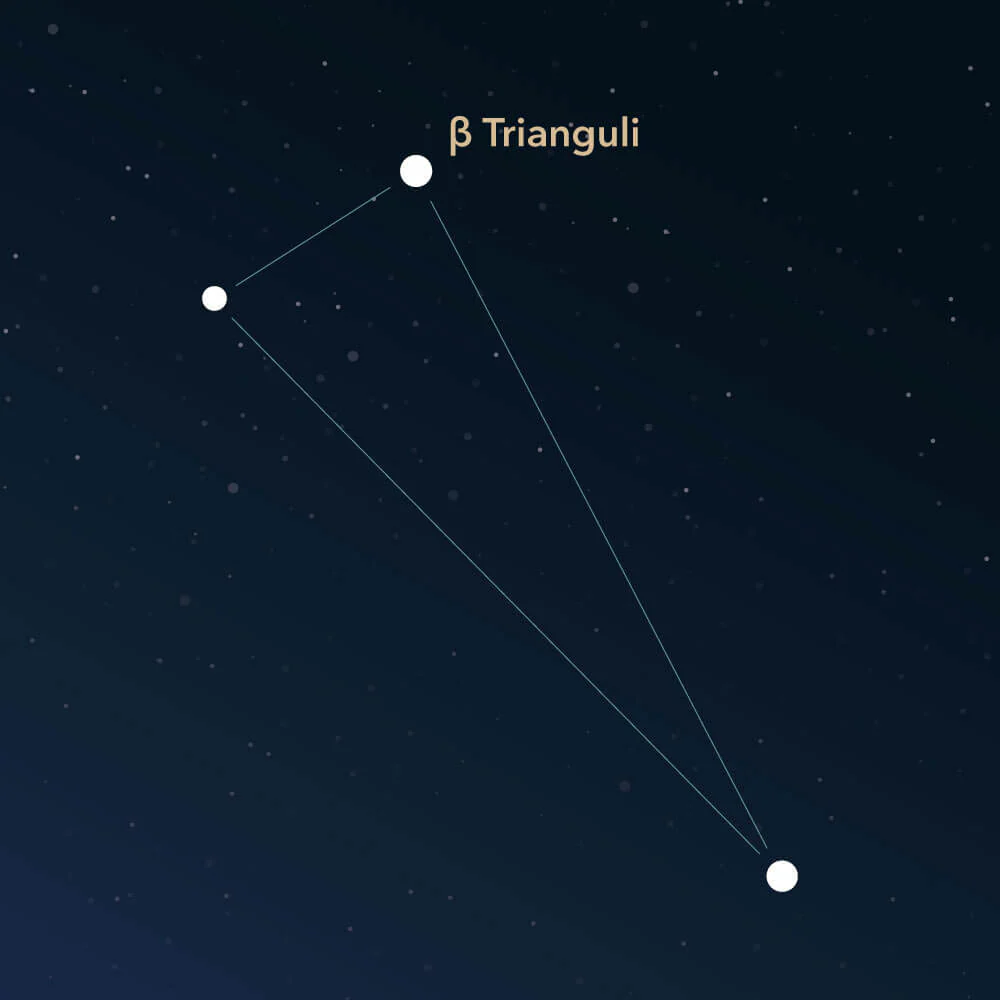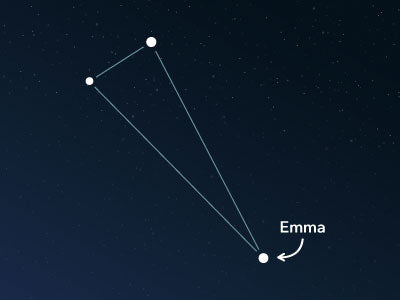The constellation Triangulum
Características
- Nombre latino
- Triangulum
- Hemisferio
- Hemisferio norte
- Visibilidad
- October - March
- Área
- 132 deg²
- Estrella más brillante
- β Trianguli (HIP number 10064)
- Especialidades
- Galaxies, emission nebula

The Triangulum, Latin for Triangle, is one of the classical 48 constellations named by the ancient Greek-Roman astronomer Ptolemy. It is a small and inconspicuous constellation in the northern sky with some interesting deep-sky objects.
Hemisphere, visibility, and area
Triangulum is one of the ten smallest constellations in the night sky, covering an area of 132 square degrees. Compared to all other 88 constellations, it ranks with its size on 78th.
It is located in the northern sky and can be observed from the entire northern hemisphere. South of the equator, it is visible up to the 53rd latitude. That means it can also be seen from southern regions, such as Patagonia in Chile and Argentina, or the Falkland Islands, also called Islas Malvinas.
The best time to observe Triangulum is from October to March. It is particularly high in the sky in December.
The three main stars form a triangle, as the name of the constellation suggests. However, only two of the three stars are of third magnitude.
The brightest of the three stars is called β Trianguli (Beta Trianguli), a white subgiant star with an apparent magnitude of roughly 3. It is a double-star system about 124 light-years distant from the earth. While the primary star of this system has 2.5 times the mass of our sun, the companion star is about the same size as our sun. However, both stars are very close and cannot be recognized as a double-star system in a telescope.
Although the Triangulum mainly consists of fainter stars, it is easy to locate in the night sky. Because it lies in between prominent constellations that are helpful to orient oneself. Andromeda borders to the north of Triangulum and Pisces to the east. Aries lies in the south, while the Perseus constellation is located to the west.
Specialties in the constellation
Close to the star α Trianguli (Alpha Trianguli), which marks the sharp tip of the triangle visualization, lies the Triangulum Galaxy M33 (Messier 33). It is a spiral galaxy located about 2.4 million light-years away from earth. M33 was discovered by Charles Messier in 1764 and is the second closest galaxy after the Andromeda Galaxy.
However, its low brightness makes seeing it in the night sky challenging. On new moon nights, away from large light sources, it can be perceived as a hazy patch in a prism binoculars. The other galaxies in the Triangulum constellation are also not particularly prominent.

In one of the spiral arms of M33, there is also the emission nebula NGC 604. The German-British astronomer William Herschel discovered the nebula around 20 years after the spiral galaxy was found. It appears greenish in photographs.
Mythology and history
The Triangulum was already discovered in ancient times and received the name Deltoton among the Greeks because the constellation had a resemblance to the capital letter delta (Δ) of the Greek alphabet. Additionally, the Greeks interpreted the Delta of the Nile as the triangle, which gave rise to the further name "Gift of the River."
At the same time, the triangle represented the island of Sicily, which also has a triangular shape. Sicily was dedicated to Demeter, the goddess of the earth's fertility, crops, and seeds. Persephone, another fertility goddess of Greek mythology, was abducted from there by Hades, the ruler of the underworld.
PublicadoLeer más artículos interesantes

An overview of all 88 constellations
Learn more about all 88 constellations and read interesting information about the mythology, visibility, and features.

Planetario App
¡Descubre el cielo nocturno con nuestra aplicación de planetario!
Disponible para iOS y Android.

Nombrar una estrella en la constelación Triangle
Name a star in a constellation and create something that lasts for eternity.